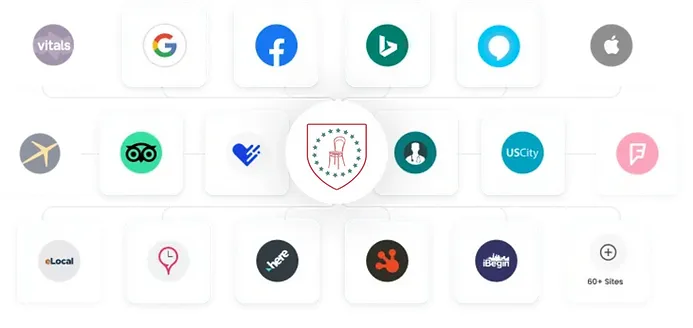
Introduction to Maximizing Efficiency and Employee Satisfaction
Improve your HR processes by using integration solutions and HR tools. Learn how integrating HR systems can make your operations more efficient. Begin using HR systems integration solutions now to optimize your efficiency.
by British Library (https://unsplash.com/@britishlibrary)
Combining HR systems is a smart way to bring different HR resources together in one system. This helps businesses by providing a single platform for managing HR tasks. Integrating HR systems can simplify and automate many processes, such as hiring, payroll, and performance reviews.
Beyond just making operations smoother, integrating HR systems has other benefits. In the following sections, we'll explore what HR systems integration means, why it's important for strategic planning, its advantages, and how to do it effectively in your business.
Understanding HR Systems Integration
Integrating HR systems means putting various HR tools and technologies together in one system. This helps data move smoothly between different HR tasks, cutting down on manual work and mistakes. The combined system can handle many HR functions, like:
Recruitment and talent acquisition
Onboarding and training
Payroll and benefits administration
Performance management
Employee engagement and retention
By integrating these functions, businesses can create a more efficient and effective HR department capable of supporting strategic planning and business development.
by ThisisEngineering (https://unsplash.com/@thisisengineering)
The Role of HR Systems in Strategic Planning
In business success, having a plan is crucial. In HR departments, planning involves ensuring HR goals match the overall business goals. Integrated HR systems play a key role by providing data and information for making smart decisions. For instance, these systems can give instant updates on how well employees are doing, helping managers see where improvements are needed and develop ways to boost productivity. They can also show trends in hiring, helping businesses plan for future staffing needs.
Overcoming Challenges with Standalone HR Tools
Separate HR tools can create problems for companies. These tools work independently, making it hard to share data between different HR tasks. This lack of integration can lead to issues like entering the same data multiple times and having conflicting information. Additionally, standalone tools may not have the advanced features and abilities of integrated systems, limiting their effectiveness in aiding strategic planning and decision-making. Companies can overcome these challenges by combining their HR systems and making their HR department more efficient and effective.
Key Benefits of HR Systems Integration
Integrating HR systems has many advantages. It makes operations smoother, reduces mistakes, enhances employee satisfaction, centralizes data, and boosts compliance. By using these advantages, companies can improve their HR departments to support their strategic goals better.

by Morgan Housel (https://unsplash.com/@morganhousel)
Streamlining Processes and Reducing Errors
One of the key benefits of HR systems integration is the ability to streamline processes and reduce errors. With an integrated system, data can flow seamlessly between different HR functions, eliminating the need for manual data entry and reducing the risk of errors. Enhancing operational efficiency can free HR staff to focus on more strategic tasks.
Enhancing Employee Experience and Productivity
Connecting HR systems can make work better for employees and help them work more efficiently. For example, a connected system gives employees one place for all their HR tasks, like requesting time off or checking their pay. When the employee experience is smoother, they feel more involved and work better.
Centralizing Employee Data for Better Management
Combining HR systems helps keep all staff info in one place. This makes it simple to handle and get to. Plus, it helps managers make better choices by giving them easy access to necessary data.
Facilitating Compliance and Transparency
To sum up, combining HR systems can improve compliance and transparency. A unified system can automatically track and record data on compliance, helping businesses follow labor laws and standards. Additionally, the system can provide insight into HR activities, fostering trust and fairness in the company.
Selecting the Right Integration Solutions
Choosing the right tools to connect your HR systems is important for making your business run smoother. Your pick should match what your business needs, be able to grow as your business grows, and give you a good return on your investment. Here are some key things to think about when picking an integration solution:
Compatibility with existing HR tools
Scalability to accommodate business growth
Cost-effectiveness
Vendor support and customer service
Data security and privacy features
by Morgan Housel (https://unsplash.com/@morganhousel)
Evaluating Integration Solutions for Your Business Needs
When choosing integration solutions, think about what your business needs. If you have many remote workers, pick a solution that works well on mobile. If your business is in different countries, get a solution that helps manage a global workforce.
Scalability and Cost Considerations
Scalability is important when choosing an integration solution. It should support your business's growth without needing a lot more money. You should think about how much it costs at the start and how it can save you money by cutting HR administrative work.
Implementing HR Systems Integration
Once you've chosen the right integration solution, the next step is implementation. This can get complicated as it includes combining HR tools and systems, moving data, and training employees. Here are some important steps during implementation:
Aligning the integration with overall business objectives
Ensuring data integrity during data migration
Training employees on the new integrated systems
Managing change during the transition
Best Practices for a Smooth Transition
Successfully switching to integrated HR systems involves careful planning and execution. Start by integrating a few key systems first, then gradually add more. It's important to include all stakeholders to get their buy-in and support for the change.
Training and Change Management
Training is very important when integrating HR systems. Employees need to know how to use the new systems well and why the change is good for them. To make sure the transition is smooth and employees use the new systems a lot, strategies like good communication and feedback loops are also important.
Leveraging Technology for Enhanced Integration
In today's world, technology is vital for connecting HR systems effectively. Different technologies like APIs and cloud solutions help integrate HR systems smoothly, making operations more efficient. Let's look at some important technologies that can improve HR systems integration:
APIs (Application Programming Interfaces) for seamless data exchange between different systems
Cloud-based solutions for remote access and scalability
Artificial intelligence and machine learning for predictive analytics and decision-making support
Mobile technologies for anytime, anywhere access to HR systems
by Marvin Meyer (https://unsplash.com/@marvelous)
The Role of APIs and Cloud-Based Solutions
It's very important to think about keeping data safe when combining HR systems. This is because integrated systems might have sensitive employee information, which could be at risk of cyberattacks. To protect this data, it's crucial to pick integration solutions with strong security measures like encryption and two-factor authentication. These solutions should also follow data privacy rules.
Measuring the Impact of HR Systems Integration
When HR systems work together smoothly, it can make your business run better, make employees happier, and more successful. To measure this impact well, you need to know your business goals and the key things you want to track, like how well your business is doing. Here are a few common things people track to see how HR systems are helping:
Reduction in HR administrative time and costs
Improvement in data accuracy and reduction in errors
Increase in employee productivity and satisfaction
Improvement in compliance and risk management
Increase in the speed and quality of decision-making
by LinkedIn Sales Solutions (https://unsplash.com/@linkedinsalesnavigator)
ROI of HR Systems Integration
Integrating HR systems can bring big benefits for businesses using separate HR tools. It can save money and boost productivity by making processes smoother, cutting mistakes, and aiding decision-making. Also, happier employees tend to stay longer, adding to the returns from integrated HR systems.
Continuous Improvement and Future Trends
Integrating HR systems isn't just a one-time thing. It's an ongoing process to adjust to new business needs and tech changes. Keeping up with upcoming HR tech trends like AI, machine learning, and predictive analytics can help companies make the most of their integrated HR systems. Also, getting feedback from users and stakeholders can help improve and optimize the systems continuously.
Conclusion: The Strategic Advantage of Integrated HR Systems
In summary, combining HR systems is not only about making HR tasks easier and cutting down on administrative costs. It's also about using technology to get ahead in today's tough business environment. By bringing together HR systems, we can make better decisions, follow regulations better, be more open, and improve how employees feel about their work. This can all lead to better efficiency and success for the business.
Key Takeaways for Small Business Owners and Corporate Executives
Small business owners and corporate executives should see integrating HR systems as a smart investment with big rewards. By choosing the right integration tools, using them well, and staying up-to-date with new trends, businesses can improve their HR tasks, boost their strategic planning, and reach their goals.
